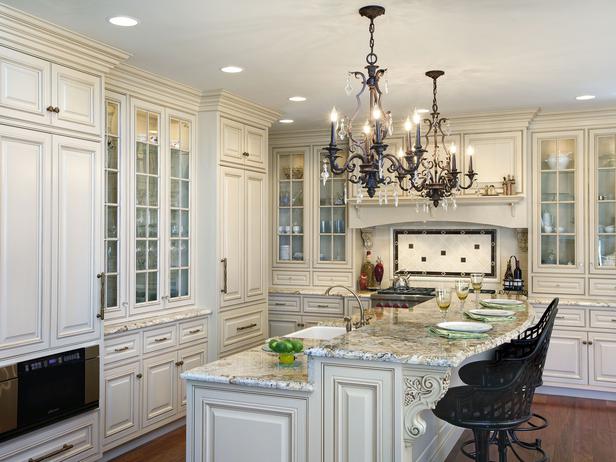How to Select the Proper Lighting for a Kitchen
-
\r\n The kitchen is the busiest room in the home. And just like in all rooms of your home, a combination of general, task and mood lighting is the best way to create a mix of diffused and directed light.\r\n
\r\n\r\n
\r\n The way we light our home environment, and specifically the kitchen, affects the functionality of the space and how we feel when we’re spending time there. Despite this, lighting is often an afterthought in a kitchen remodeling project—the last detail after the cabinets, the appliances, the tile, the granite countertops ... So it’s no wonder that there’s often a sliver of the budget left for this critical element.\r\n
\r\n\r\n
\r\n \r\n
\r\n \r\n Oftentimes, people simply accept the lighting that’s there and don’t think about changing it to improve the space, says Randall Whitehead, renowned lighting designer/author and president of Randall Whitehead Lighting Solutions, San Francisco, Calif. “People are entertaining more at home than they used to, and the kitchen is the center of that entertaining,” he says. As for the lighting in that space, he says “people are drawn to lights like moths to flames.”\r\n
\r\n\r\n But most people don’t understand why they are drawn to light. The secret is in how lighting is layered in a space.\r\n
\r\n\r\n There are 3 kinds of kitchen lighting: task lighting, ambient lighting and accent lighting. If you are considering a kitchen remodel, it is a great idea to include all 3 for maximum cooking efficiency and home comfort.\r\n
\r\n\r\n
\r\n
- \r\n
- \r\n Task. This lighting illuminates work spaces, such as countertops where you are prepping food or inside a pantry closet so you can see what goods are stocked on those shelves.\r\n \r\n
- \r\n Accent. This highlighting adds depth and dimension to the environment. Examples include recessed adjustable fixtures and track lights.\r\n \r\n
- \r\n Ambient. This gentle light fills the room and bounces off the ceiling. You’ll get this effect from pendant-hung indirect fixtures, opaque wall sconces and torchieres. “You want that opulent layer of light—an even pool of light that gives you a base layer,” says Jeff Dross, director of education and industry trends at Kichler Lighting, referring to this as “general lighting” or the opulent layer. Can lighting can accomplish this as well.\r\n \r\n
\r\n
\r\n No single layer of light can stand alone. If you only use ambient light, the people will look great because shadows are softened, but Whitehead calls the result a “cloudy day effect” because there is no depth or dimension. “There is no real visual interest,” he says.\r\n
\r\n\r\n If you only incorporate accent lighting, you get a museum effect. “You light every object in the space but friends and family fall into the darkness,” he explains. “You’re telling people that what you own is more important than them.”\r\n
\r\n\r\n A room with just decorative lighting distracts the eye. “How many dining rooms have you seen where it’s one chandelier over the table and that’s it?” Whitehead asks. “You can’t see Aunt Edna at the other end of the table because she is lost in this supernova of illumination.” In other words, only installing decorative lighting is a big “don’t.”\r\n
\r\n\r\n Feel daunted by the light layering process? Rest assured, no matter the size of a space, four layers of light can be incorporated into any room. “A lot of times, fixtures can provide more than one function,” Whitehead says. “Like in the kitchen, the pendant lights are decorative, but they throw light up on the ceiling so they are an ambient light source as well.”\r\n
\r\n\r\n Tips:\r\n
\r\n\r\n
- \r\n
- \r\n Consider putting in a dimmer switch, if you plan to entertain or use mood lighting.\r\n \r\n
- \r\n If you are doing a home remodel, consider putting each different type of lighting on a separate circuit. This will give you more control and it can also save you money on your electricity bill.\r\n \r\n
- \r\n Kitchen lighting can be a huge energy hog, especially with the popularity of bright halogen lamps. Seriously consider installing LED lights that consume nearly ten times less electricity. Most forms of halogen lamp have an LED equivalent these days.\r\n \r\n
- \r\n If you can't afford to install all 3 types of lighting, decide based on the primary functions of the room. If it is only used for cooking, focus on task lighting. If you spend more time eating than cooking, focus on ambient light.\r\n \r\n
Related Articles
